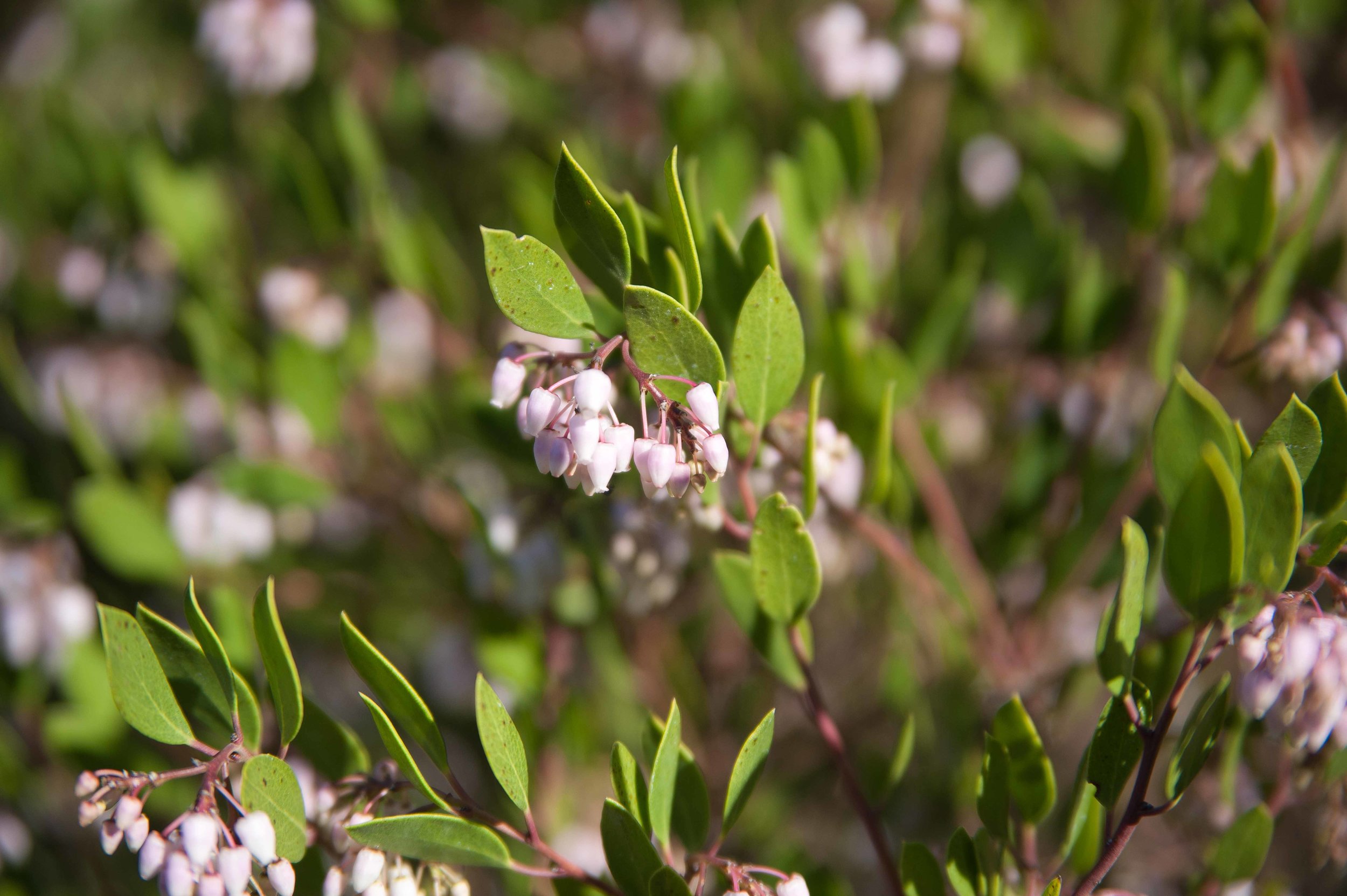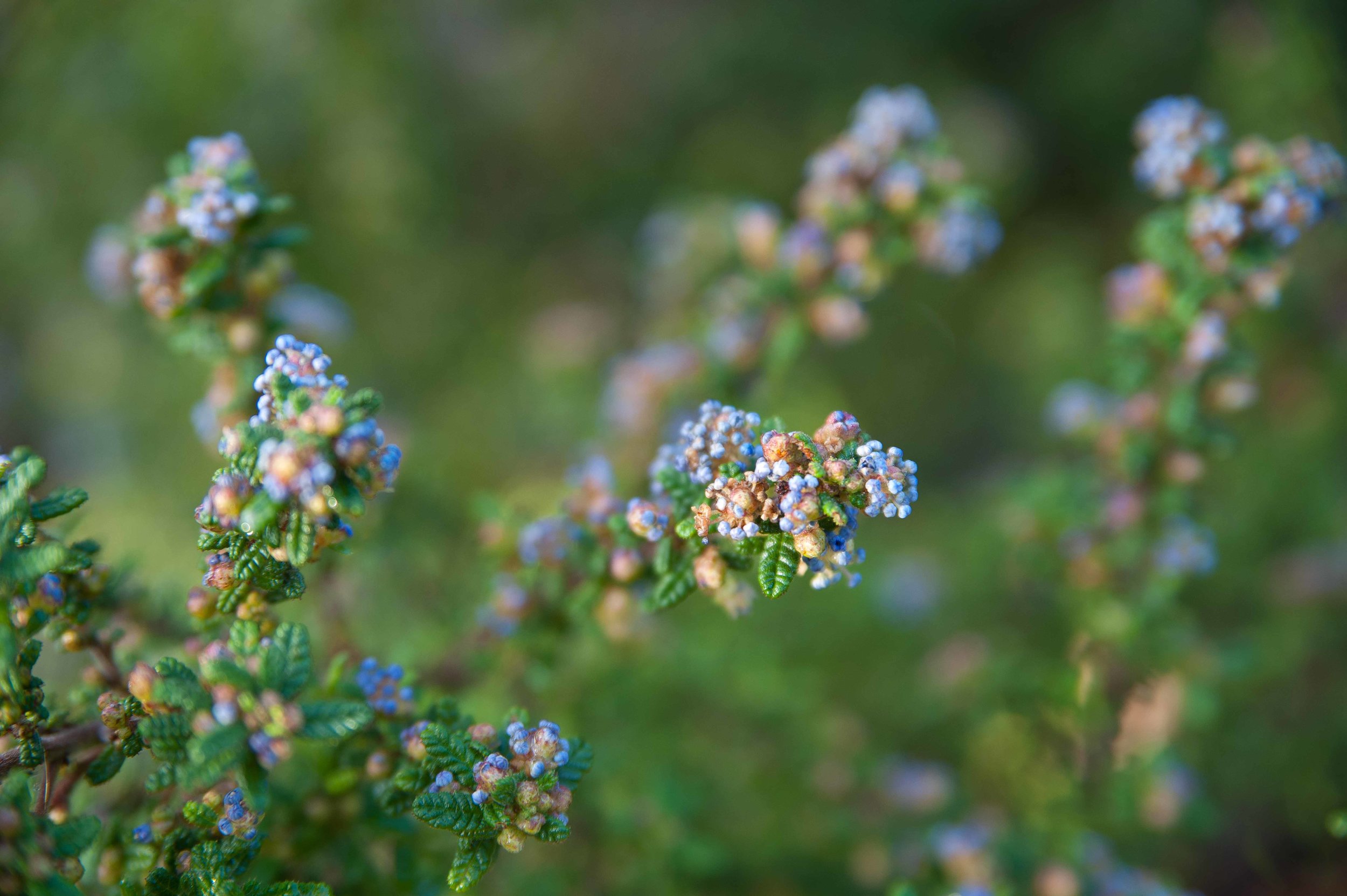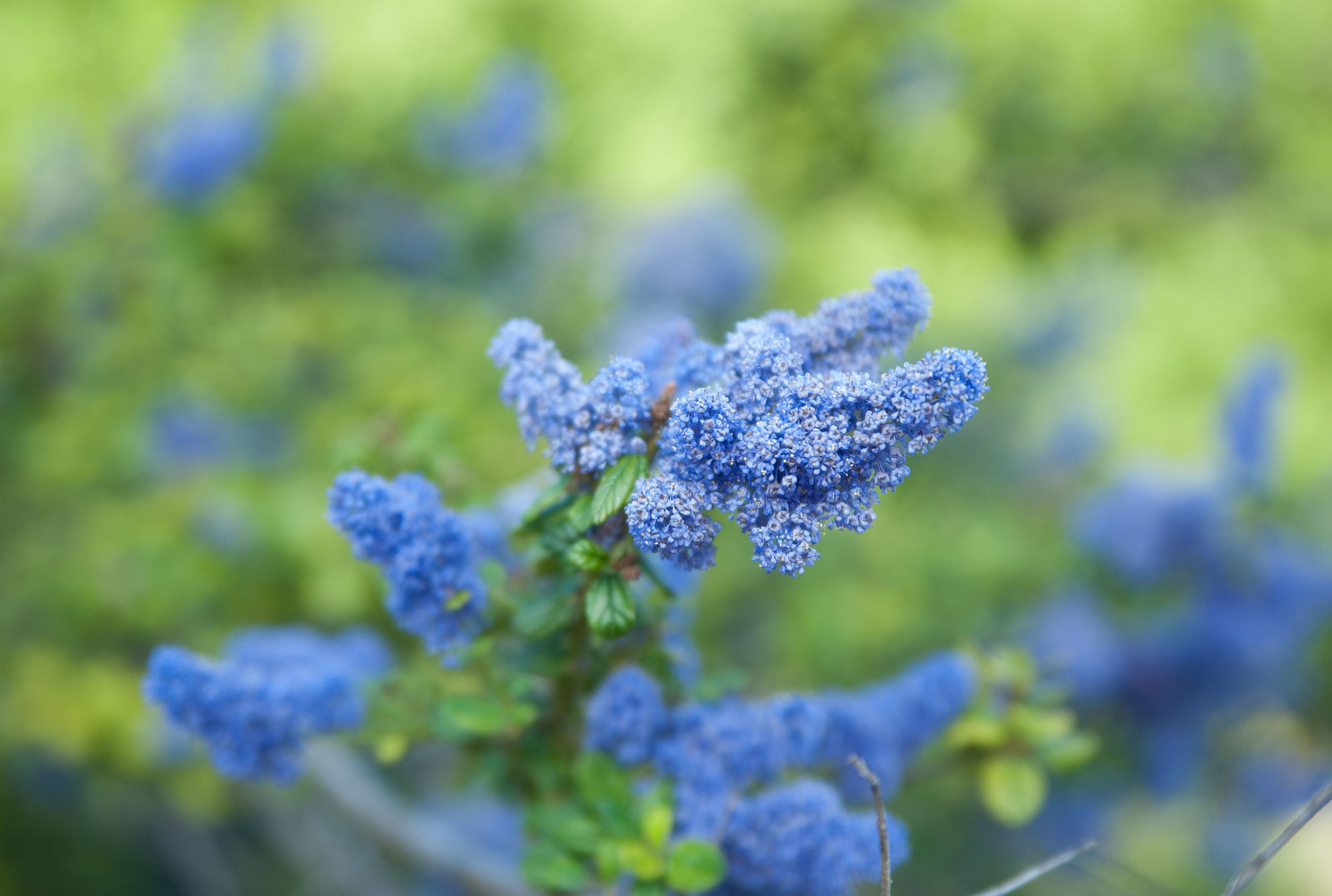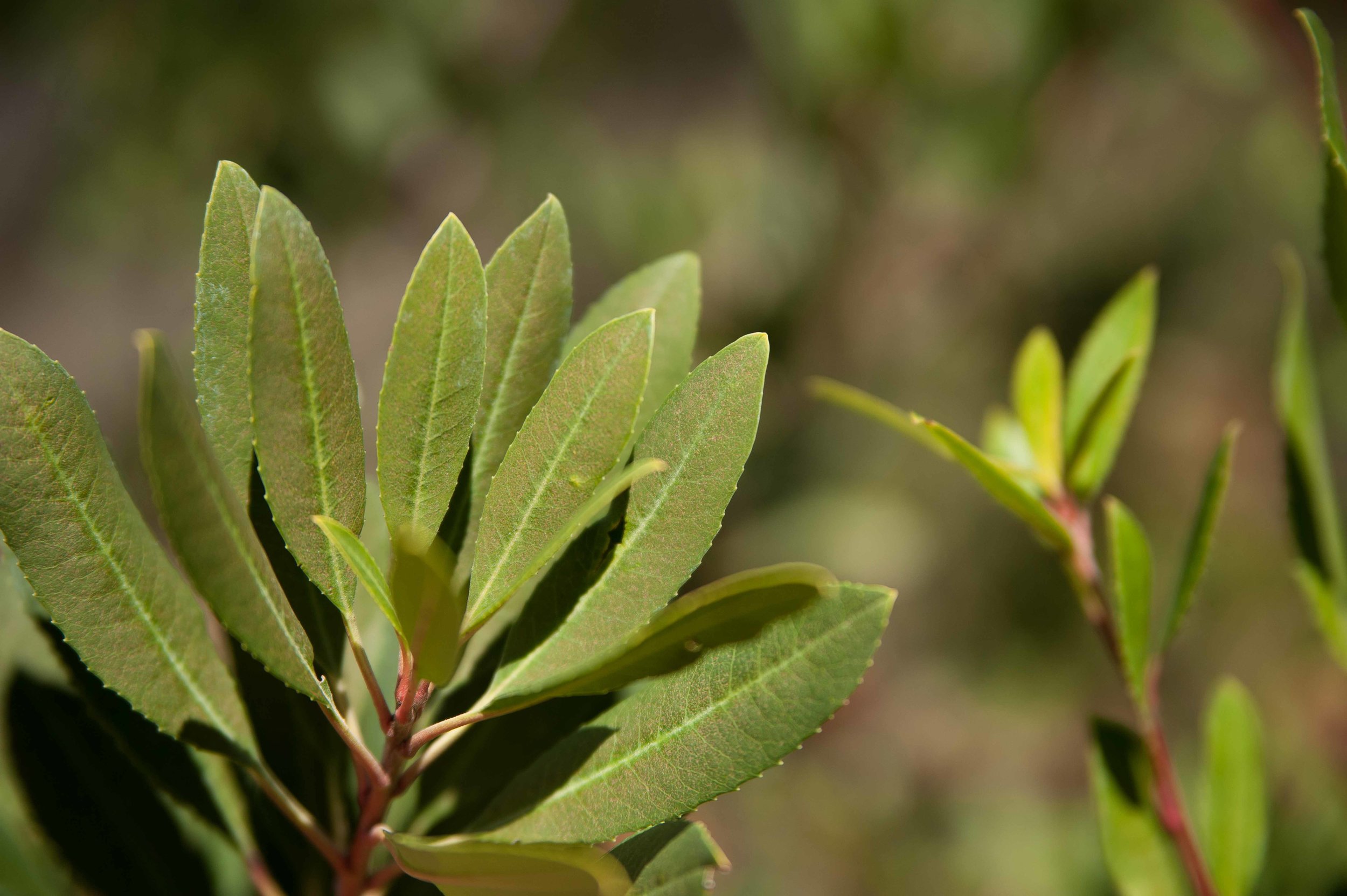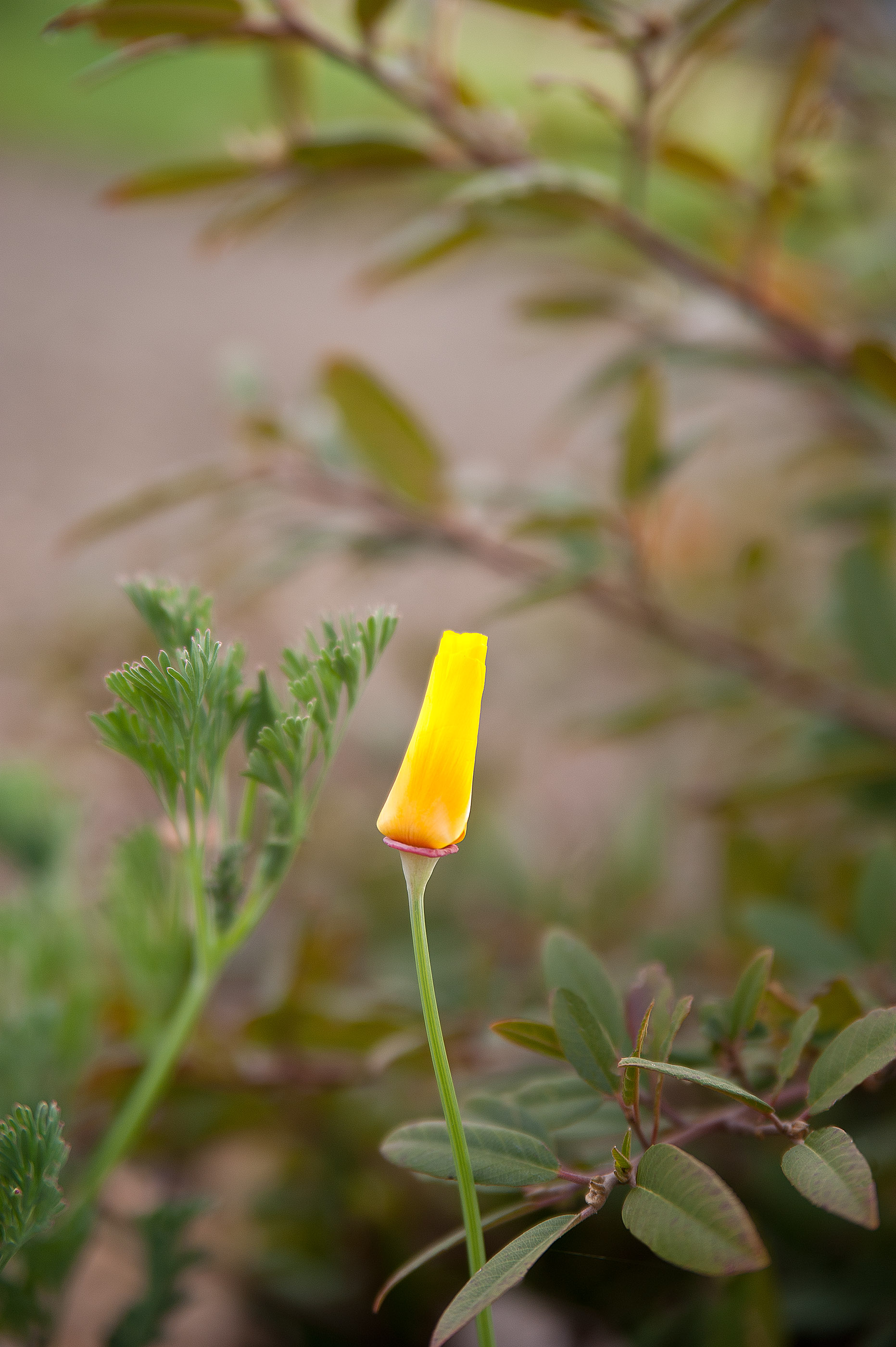Epilobium canum, also known as California fuchsia brightening up the slope and various areas throughout the garden with their vibrant blooms. It is native to dry slopes and in chaparral of western North America, especially California. It is a perennial plant, notable for the profusion of bright scarlet flowers in late summer and autumn.
Menzies' Goldenbush
Menzies' Goldenbush looking golden in the morning sunrise in the garden.
Isocoma menziesii is a native shrub great for attracting pollinators and puts on a beautiful display with its long lasting blooms. Low maintenance and low water needs as well make this an ideal plant!
Showy Penstemon
The “Showy Penstemon” putting on a show in the garden late in the fall and all summer long. Another beautiful native plant loved by hummingbirds and pollinators.
Golden Yarrow
The golden yarrow (Eriophyllum confertiflorum) looking bright and beautiful in the garden. This wonderful native plant has greenish to gray-green stems and foliage, The top of each stem is occupied by a flower cluster of up to 30 flower heads, each bright golden yellow head with a large center of disc florets. Its long blooming season makes it welcome in the garden.
Howard McMinn Manzanita
Arctostaphylos
Arctostaphylos ‘Howard McMinn’ is a medium to large Manzanita for almost any garden, tolerant of many garden conditions. It is actually a hybrid variety and has a beautiful clean delicate green foliage.
I love the profuse display of bloom throughout late spring making it a show piece in a garden coming out of winter.
I also particularly enjoy the beautiful and amazing smooth red bark which is displayed as the plant matures to an open habit. (Pruning also can enhance this look). Great for an accent or even massing for larger areas.
-text contributed by Lida Grant
Mountain Lilac
Ceanothus Concha
Dense evergreen shrub with arching branches and alternate, oblong-elliptic, finely toothed dark green leaves, to 2” long. In late spring, reddish purple buds open to dark blue flowers, providing a spectacular display in a wide variety of garden settings. Not deer resistant.
-text contributed by Eva Powers
-photos by Derek Glas
Toyon
Heteromeles arbutifolia
This california native is one of the hardiest of evergreen shrubs. It is recognizable for its red berries during the winter months and is sometimes referred to as Christmas Berry. It can be a large shrub to small tree, depending on the location; typically about 6-8’ tall and 4-6’ wide if kept as a hedge in the garden. As a tree it can reach 20’ with age.
Heteromeles tolerates many different soil types and climactic situations, although prefers good drainage. It will also grow in sun and shade and is tolerant of some wind.With early protection, it will survive areas of high deer activity too. Birds also love this plant and it should be a staple in all wildlife settings.
A great screening shrub and foundation plant for all situations.
-text contributed by Kathryn Dole
-photos by Derek Glas
Blue Oak
Quercus douglassii
The Blue Oak is a medium-sized, deciduous oak that exhibits blue-toned foliage. The Blue Oak, found on the upland slopes of Figueroa Mountain, also requires minimal watering and does best with little to no summer water. Despite its slow-growing nature, these oaks play a vital role in the ecosystem health by providing food and shelter for the plants and animals in the native California landscape and are not susceptible to the sudden oak death fungal disease. We proudly have several beautiful Blue Oaks growing happily in the Santa Ynez Valley Botanic Garden!
California Poppy
Eschscholzia californica
California Poppy, Copa de Oro
The California Poppy is a member of the Papaveraceae family. The Poppy family consists of 42 genera and approximately 800 species. It is named for Johann Friedrich Von Eschscholtz; a German botanist who explored California in 1810. Eschscholzia californica became the official state flower in1902 beating out the Mariposa Lily (Calochotrus) and the Matilija Poppy (Romneya) for the Honor.
Description:
Eschscholzia californica is an herbaceous annual or biennial, 6 inches to two feet in height and spread. The leaves are blue- grey-green, glaucus and finely divided into linear segments. The leaves are primarily basal and attach to a long thin carrot like taproot. The flowers have four bright orange silky petals 1 to 2 inches long and bloom from February through September. The flower has numerous stamens and 1 pistil attached to a superior ovary. The flowers close at night or in windy conditions to help conserve water. The seed pod is a single chambered linear tube; 1 ½ to 3 inches long and 1/8 inches in diameter, containing 50 or more seeds. The seeds are round, dark brown to black in color and less than a thirty-second of an inch in diameter.
Habitat:
Eschscholzia californica is native to the Western United States and Northern Mexico from sea level to 6000 feet of elevation. It is commonly found in large colonies in open meadows and hillsides. It is tolerant of most soil types, but prefers well drained loam and full sun.
Uses:
California Poppy leaves and roots contain several useful medicinal compounds in the form of alkaloids. The main alkaloids are Chelirubine, Sanguinarine and Macarpine; which are used as an Analgesic, Sedative and Antispasmodic. The seeds were also consumed by Native Americans as a source of protein.
There are several other species of Eschscholzia native to California.
E. caespitosa; Tufted Poppy. Tufted foliage and yellow flowers
E. lemmonii; Lemon’s Poppy. The leaves are whitish and pubescent.
E. minutiflora; Pigmy Poppy. The plant is less than 3 inches tall.
E. ramose; Island Poppy. The flowers are less than ½ inch in diameter.
–By Steven Schulz
Dogbane
DOGBANE, also known as Indian Hemp
Apocynum cannabinum
Chumash language: "Tok"
California Buckwheat
California Buckwheat
Eriogonum fasciculatum foliolosum
The buckwheats are very important butterfly plants and one of the pillars of their communities. California Buckwheat has a whole community of insects living with the flowers. When I was photographing some of the native bees on the flowers I discovered layers of predators. There was the native bees, the flower flies and wasps, then predators of the flower insects, then insect predators of the predators, and then a bird would show up and eat the predator of the predator, and then a butterfly would fly into the middle of the fray. In a small garden you can set a couple feet away from this shrub (or sub-shrub) and watch 50 or maybe 100 insects interact at one time. It kind of feels like playing Q in Star Trek.
Sticky Monkey Flower
Sticky or Shrubby Monkey Flower
Native to Oregon, California and Baja California.
To 4 1/2 ft. tall and wide, with narrow 1 1/2 inch long sticky dark green leaves. Buff toned orange, 1 3/4 inch flowers bloom over a long spring and summer season.
Mimulus thrive in full sun or partial shade, with little water.
If you visit the SYV Botanic Garden, be sure to look below the rock wall by the kiosk and you will see the Monkey Flowers in full bloom.





